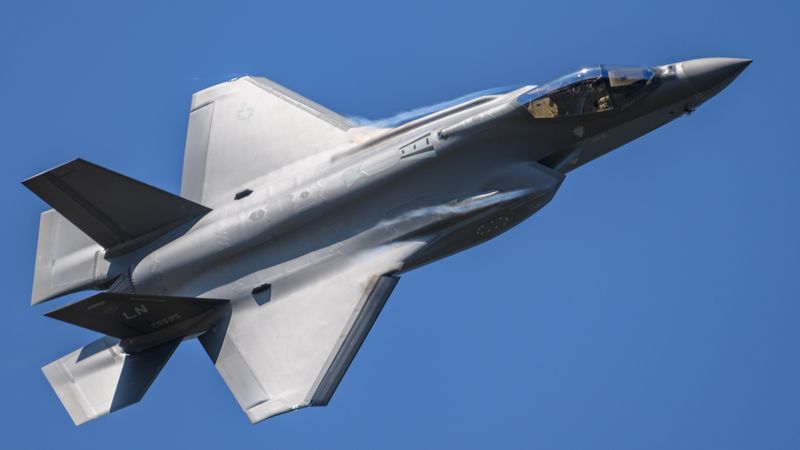From Documents to Models: Improving System Architecture and Design Validation in Aerospace With Model-Based Systems Engineering (MBSE)
Explore how MBSE can be used to optimize system architecture, streamline design validation, and facilitate collaboration in aerospace projects.
As aerospace and defense projects grow in complexity, the industry faces a need for new methodologies to manage complex system architectures and facilitate design validation processes. Model-Based Systems Engineering (MBSE) is addressing these challenges by moving organizations from document-based systems to a model-centric approach.
One key player driving this transformation is Quest Global, a leading engineering services provider renowned for its pioneering role in digital thread integration across the aerospace and defense industry. Quest Global has established itself as a trusted partner, helping major aerospace organizations adopt Model-Based Systems Engineering (MBSE) and leverage digital thread solutions to enhance project efficiency, system accuracy, and cross-functional collaboration. Their expertise in integrating MBSE techniques has enabled aerospace companies to meet modern challenges head-on, significantly improving project outcomes.
This article explores how MBSE connects design processes and tools to enable greater flexibility, accuracy, and efficiency in aerospace and defense projects. It also highlights Quest Global's role in leading this transformation, providing case studies on successful implementation to illustrate its real-world applications and benefits across all development stages.
Why the Shift from Document-Based to Model-Based Systems Engineering?
MBSE is a systems engineering methodology that fundamentally improves how complex systems are developed and managed throughout their entire lifecycle. At its core, MBSE allows for an authoritative source of truth (ASoT) for systems, depicting components as interconnected blocks with defined boundaries and interfaces. This visual representation aids both technical and non-technical stakeholders in understanding complex systems. For example, in developing a new turbofan engine, MBSE can map interactions between the engine and external systems like avionics and flight controls.
One of the key features of MBSE is its centralized model-based approach. In MBSE, a well-structured model provides a graphical representation of processes, structures, and workflows, making it easier to understand and manage. In this approach, changes made within a model propagate automatically, ensuring consistency and reducing labor.
Watch It On-Demand: Unlocking the Power of Digital Twins for Aerospace Manufacturing
Now available on-demand, “Unlocking the Power of Digital Twins for Aerospace Manufacturing” provides valuable insights into how these transformative technologies are reshaping the industry. Access now:
Benefits of MBSE in Aerospace
Model-Based Systems Engineering (MBSE) significantly enhances efficiency by streamlining the development process, leading to reduced time to market and faster product launches. This approach also contributes to substantial cost reductions by leveraging models effectively to identify and address inefficiencies early in the development cycle.
A core objective of MBSE is to improve product quality by enhancing system design and reducing defects. Executives can monitor this improvement through key metrics, such as defect rates and performance indicators, reflecting the quality of systems engineering outputs. Additionally, MBSE fosters stakeholder satisfaction through improved communication and collaboration across teams.
Assessing the return on investment (ROI) of MBSE is crucial for understanding its financial impact. Executives should evaluate cost savings from reduced errors, increased productivity from streamlined processes, and improved product quality that leads to better market performance. Furthermore, it is essential for MBSE initiatives to align with the organization’s strategic goals. Evaluating the extent to which MBSE contributes to long-term success ensures that it serves as a strategic enabler, supporting the organization's vision and mission.
From Complexity to Clarity: Streamlining Aerospace Design with MBSE
The use of a digital modeling approach significantly enhances system architecture in aerospace projects, offering improved visualization and analysis. Digital models provide a clear and cohesive representation of complex systems, enabling engineering teams to better understand and navigate the intricacies of the design architecture.
Quest Defense (QDSS), the US subsidiary of Quest Global, has been instrumental in helping its clients navigate the complexities of MBSE implementation. Recent projects have demonstrated Quest Defense's capability to streamline systems engineering processes and deliver tangible ROI for its clients.
A prime example of this is the F-35 program, in which QDSS was a key partner. Despite its success, the F-35 program initially faced numerous challenges, including significant budget overruns and delays. Some of the key challenges included maintaining and evolving unified systems engineering artifacts, traceability, communications, incomplete validation and verification requirements, as well as not reusing systems developed in earlier programs.
Learning from past challenges, the Department of Defense (DOD) has issued a mandate to build a systems engineering infrastructure using MBSE to address the shortcomings of classical systems engineering methods. MBSE artifacts serve as the Authoritative Source of Truth (ASoT), ensuring consistency throughout the program, reducing the risk of systems architecture divergence, better documenting V&V requirements, and improving communication. Additionally, MBSE facilitates the creation of reusable models for future development, borrowing principles from object-oriented software design. The F-35 was therefore developed as an entirely bespoke effort, with everything built from the ground up. This approach highlighted the need for a more efficient system. This approach allowed for the incorporation of reusable components into new projects, thereby decreasing development time, costs, and risks.
With QDSS’ support, the Original Equipment Manufacturer (OEM) experienced accelerated project timelines, significant reductions in design and development costs, and improved system strategies and architectures. QDSS’ digital thread integration enabled a streamlined flow of data across the entire development process, enhancing system traceability and ensuring real-time updates in response to design changes.
MBSE’s Strategic Edge in Aerospace and Defense Engineering
The success of the F-35 program highlights the many benefits of adopting a MBSE approach for aerospace and defense manufacturing. Some other key advantages include:
Enhanced Traceability and Consistency: MBSE ensures that all changes are automatically updated throughout the system, maintaining consistency and reducing manual effort.
Improved Communication: The graphical nature of MBSE models facilitates better communication among stakeholders, including non-technical personnel, by providing clear visualizations of system interactions.
Reuse of Models: Models can be stored in libraries and reused in future projects, significantly reducing development time and costs. This is particularly beneficial in A&D, where similar components like turbines or engines can be repurposed with minimal modifications.
Reduced Risk of Overruns: MBSE provides a clear and consistent roadmap that mitigates risks associated with budget overruns and project delays.
Seamless Independent Validation and Verification: Independent Validation & Verification (IV&V) is critical to any systems engineering process. Validation ensures that the correct system is being built according to requirements (validating against the CONOPS), while Verification ensures that the system is being built correctly (meeting the requirements). MBSE supports IV&V by mapping these cases both graphically and tabularly, creating clear linkages between requirements, validation, and verification. This reduces errors and simplifies the verification process to ensure the system works and that test cases are included in the model.
Addressing MBSE Implementation Issues
Transitioning to MBSE is not without its challenges. Organizations often face resistance due to the significant paradigm shift required. Key challenges include:
Organizational Buy-In: Senior management must be convinced of MBSE's benefits, necessitating a top-down approach to implementation.
Training and Education: Employees need to learn a new vocabulary and syntax, transitioning from text-based documentation to graphical models. Comprehensive training is essential to facilitate this shift.
Infrastructure and Tools: Implementing MBSE requires substantial investment in tools and IT infrastructure. Tools like Cameo can be expensive, and setting up the necessary back-end support involves additional costs.
Cultural Resistance: There is often resistance from experienced personnel accustomed to traditional methods. Younger employees may adapt more readily, but older staff may see little value in changing established practices.
Navigating MBSE Hurdles in Complex Engineering Projects
In order to ensure a successful MBSE implementation, A&D organizations can take several steps and consult partners like Quest Global to facilitate a smooth transition through the following strategies:
Develop Systems Engineering Fundamentals: Establishing a solid systems engineering process is crucial before transitioning to MBSE. This includes developing a requirements definition and management process, configuration management, and validation and verification methods.
Evangelize MBSE Benefits: Clearly communicate the advantages of MBSE to all stakeholders, emphasizing improved efficiency, traceability, and reduced risk. Projects using an MBSE approach cost 55% less than projects using a traditional SE approach. In addition, projects using an MBSE approach delivered on time 62% of the time, compared to 59% of the time with a traditional SE approach, and up to 70% of defects have been identified during the modeling and simulation stage.
Provide Comprehensive Training: Invest in training programs to help employees understand and adopt MBSE practices.
Invest in the Right Tools: Carefully select and invest in MBSE tools and infrastructure, ensuring compatibility and scalability for future projects.
Build a Culture of Continuous Improvement: Encourage a culture that values continuous improvement and adaptation to new methodologies. This includes fostering collaboration and open communication among all team members.
Facilitating MBSE Adoption In Aerospace and Defense
The future of MBSE in the A&D sector looks promising, with increasing mandates for its adoption to avoid past pitfalls and improve project outcomes. Quest Global expertise in implementing systems engineering processes extends beyond just technical implementation. They work closely with clients to address organizational and cultural challenges, providing comprehensive training and support to ensure seamless integration of Model-Based Systems Engineering (MBSE) and digital threads. As organizations continue to recognize the benefits of MBSE, its implementation will become more widespread, leading to more efficient and effective systems engineering processes.
References
1. Systematic Literature Review: How is Model Based Systems Engineering Justified? Edward R. Carroll and Robert J. Malins, SANDIA REPORT SAND2016- 2607 Unlimited Release March 2016.


